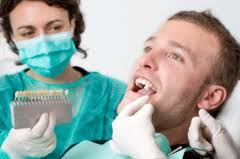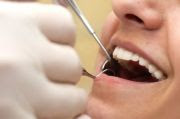The standard fee for teeth whitening and teeth bleaching procedures is about $500 in most cases. Costs can vary depending upon the area of the country you live in and the type of whitening treatment you undergo. Laser teeth whitening is typically over $1000. for example. In-home tray bleaching can cost between $50. and $100. dollars for a total teeth whitening system. Store-bought whitening strips can cost as little as $25.
Teeth Bleaching
Wednesday, February 15, 2012
costs of teeth bleaching
The standard fee for teeth whitening and teeth bleaching procedures is about $500 in most cases. Costs can vary depending upon the area of the country you live in and the type of whitening treatment you undergo. Laser teeth whitening is typically over $1000. for example. In-home tray bleaching can cost between $50. and $100. dollars for a total teeth whitening system. Store-bought whitening strips can cost as little as $25.
Teeth Whitening Procedure
Tooth whitening (or bleaching) is a simple, non-invasive dental treatment used to change the color of natural tooth enamel and is an ideal way to enhance the beauty of your smile. Because having whiter teeth has now become the number one aesthetic concern of most patients, there are a number of ways to whiten teeth.
Friday, February 3, 2012
Factors affecting teeth bleaching part 2
Heat and light
The rate of chemical reactions can be increased by increasing the temperature, where a 10 8C rise can double the rate of reaction. The use of high-intensity light, for raising the temperature of the hydrogen peroxide and accelerating the rate of chemical bleaching of teeth was reported in 1918 by Abbot. Other approaches for heating the peroxide have historically been described to accelerate tooth bleaching, such as heated dental instruments. However, excessive heating
can cause irreversible damage to the dental pulp.
The rate of chemical reactions can be increased by increasing the temperature, where a 10 8C rise can double the rate of reaction. The use of high-intensity light, for raising the temperature of the hydrogen peroxide and accelerating the rate of chemical bleaching of teeth was reported in 1918 by Abbot. Other approaches for heating the peroxide have historically been described to accelerate tooth bleaching, such as heated dental instruments. However, excessive heating
can cause irreversible damage to the dental pulp.
Factors affecting teeth bleaching part 1
1. Type of bleach
The majority of contemporary tooth whitening studies involve the use of either hydrogen peroxide or carbamide peroxide. This latter material is an adduct of urea and hydrogen peroxide which on contact with water breaks down to urea and hydrogen peroxide. For example, a 10% (w/w) carbamide peroxide gel would yield a maximum of 3.6% (w/w) hydrogen
peroxide. In general, the efficacy of hydrogen peroxide containing products are approximately the same when compared with carbamide peroxide containing products with equivalent or similar hydrogen peroxide content and delivered using similar format and formulations, either tested in vitro or in vivo.
Mechanism of tooth bleaching
Bleaching is a decolourisation or whitening process that can occur in solution or on a surface. The colour producing materials in solution or on a surface are typically organic compounds that possess extended conjugated chains of alternating single or double bonds and often include heteroatoms, carbonyl, and phenyl rings in the conjugated system and are often referred to as a chromophore.
Friday, January 27, 2012
Tooth Bleaching Risks
Tooth bleaching in modern aesthetic dental medicine, The bleaching effect is caused by active oxygen. There are no changes to the tooth enamel and nothing is removed, sanded down or etched. Possible Side Effects:
One of the most common side-effects is a temporary hypersensitivity of
the teeth when in contact with hot or cold stimulation; this can also
apply to the necks of the teeth.
Thursday, January 26, 2012
Advantages Of In-Office Teeth bleaching
There are many different options available for you to choose from today when it comes to using teeth whitening gel. There are in-office types of procedures as well as out of the office or at home kits and systems. They both offer some advantages that you can consider when deciding which is the best method and system for you. There are some significant advantages to the in-office or in the dental office methods of teeth whitening that should be considered.
Subscribe to:
Comments (Atom)






